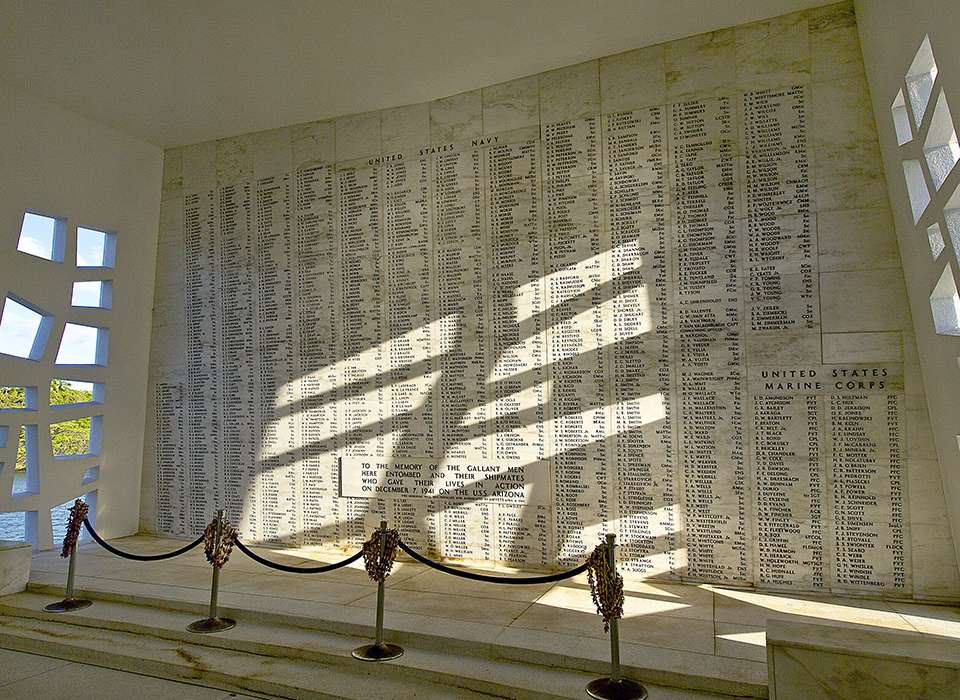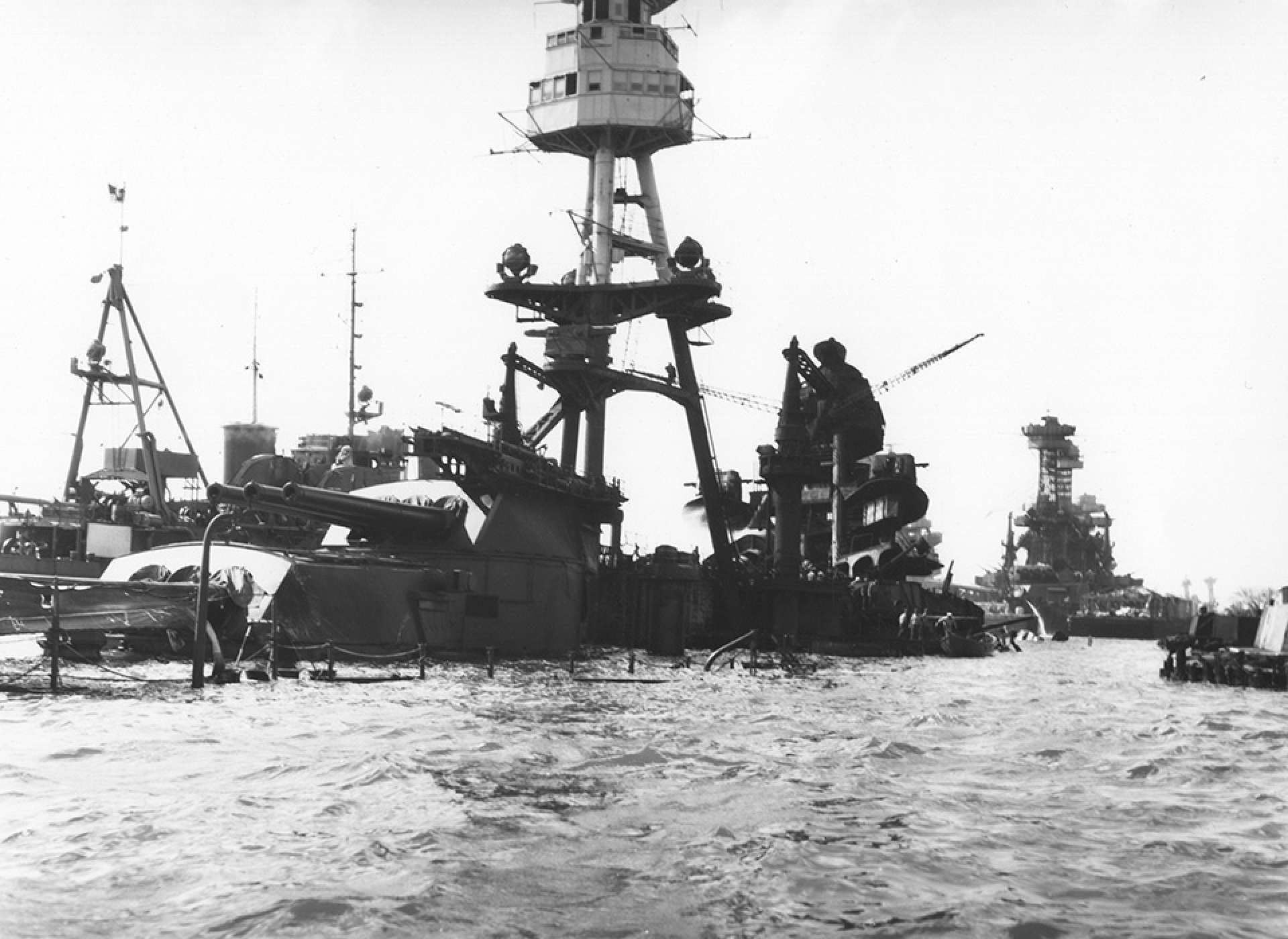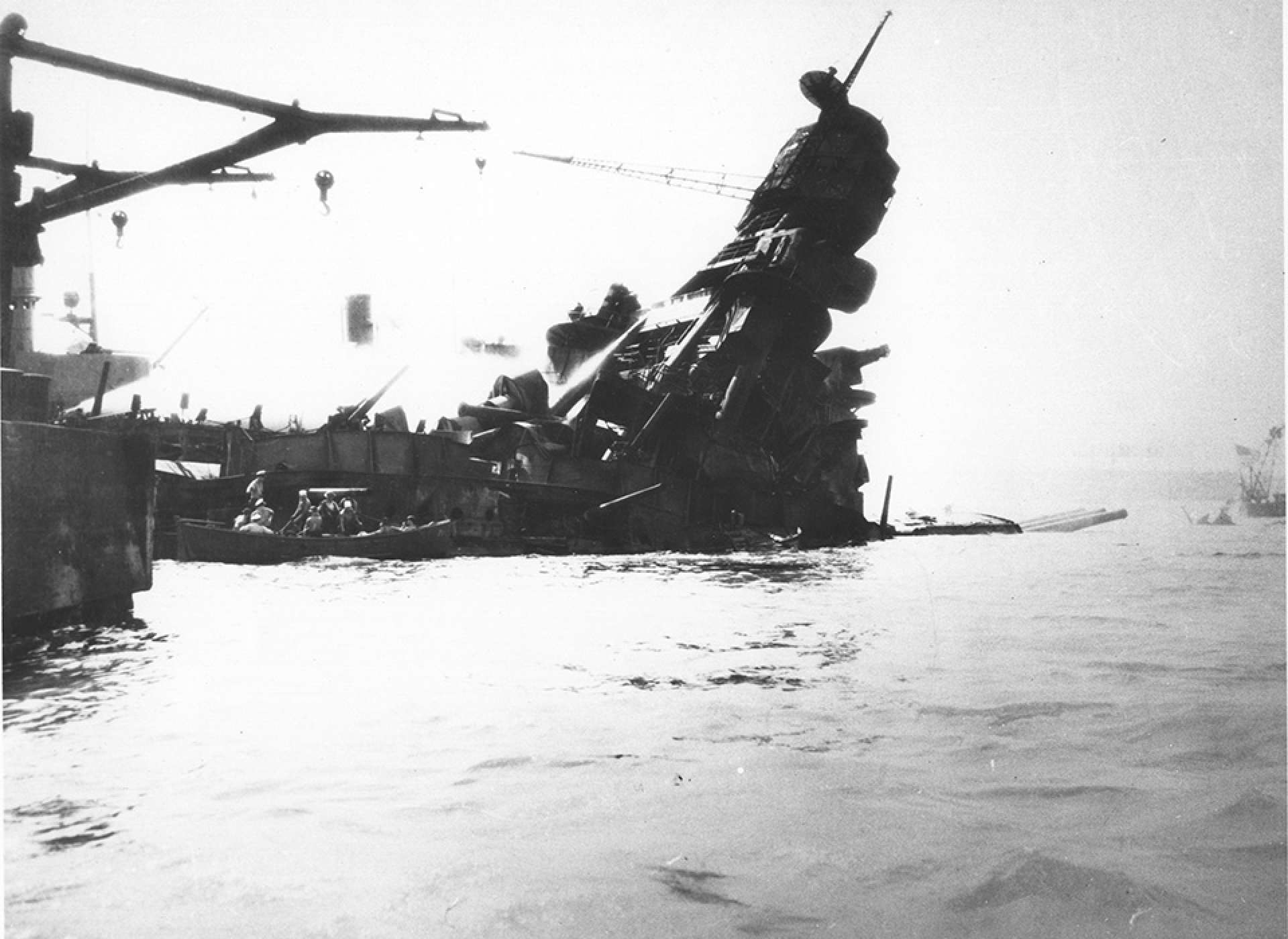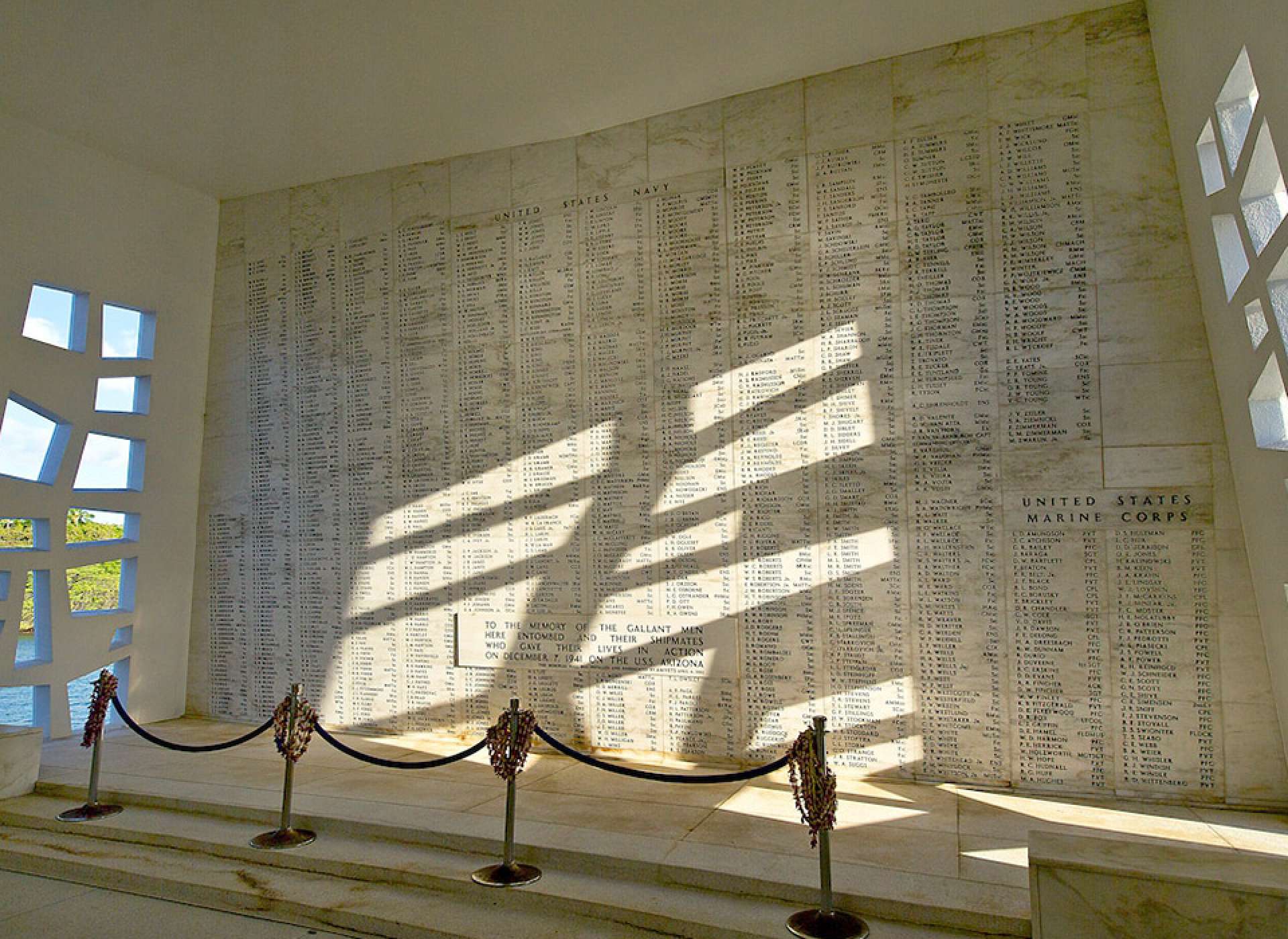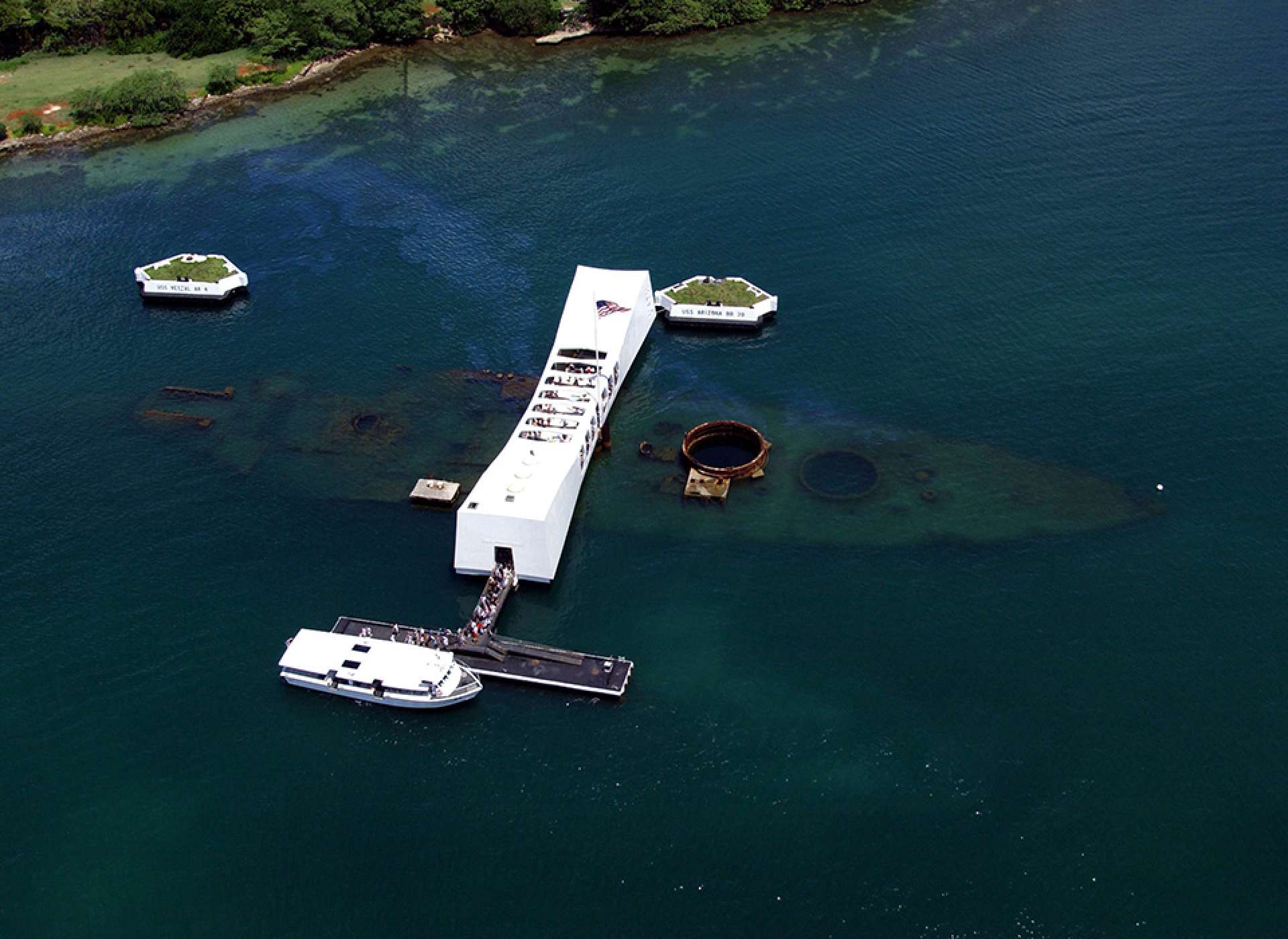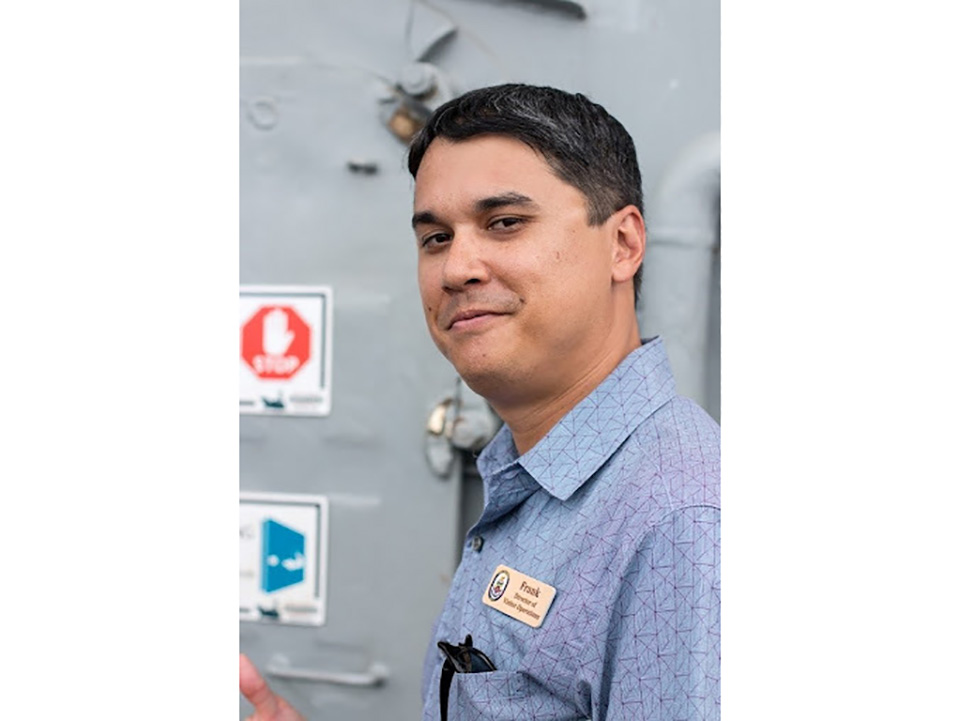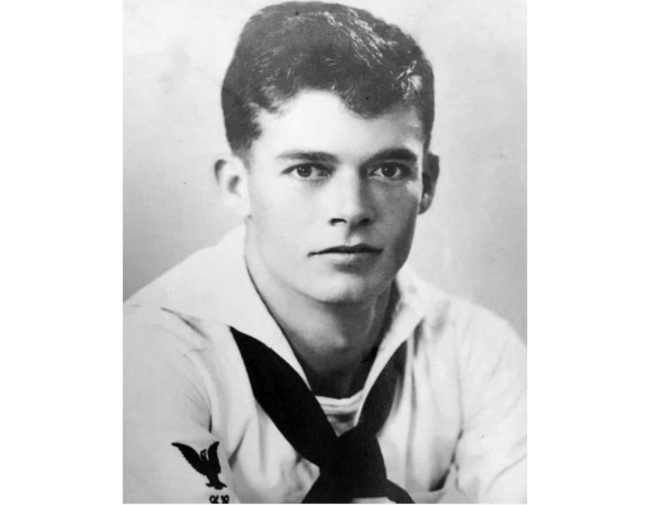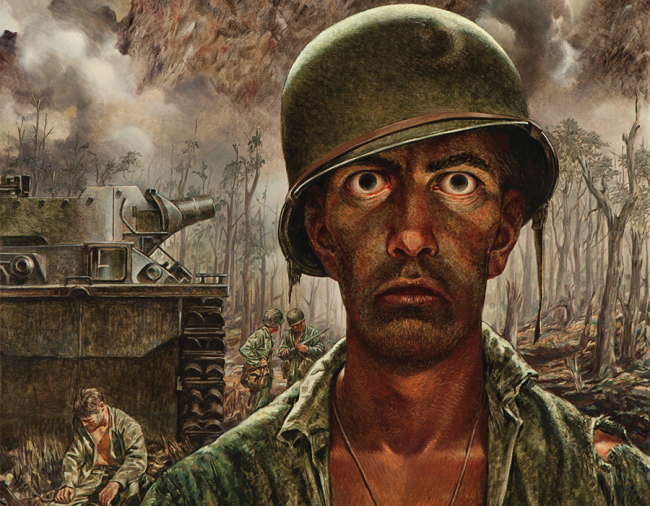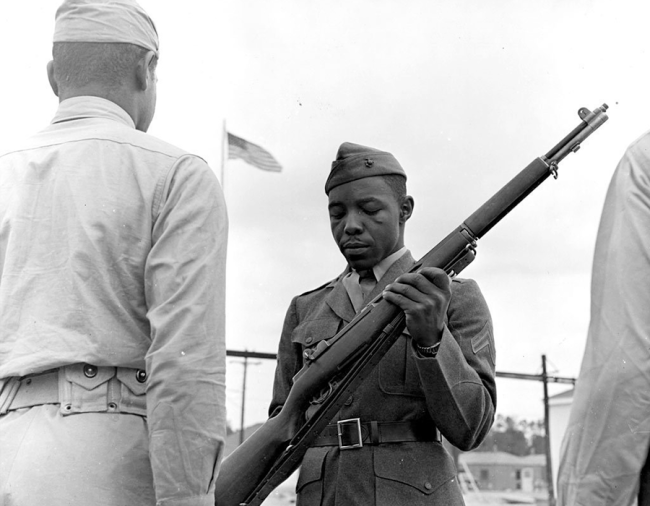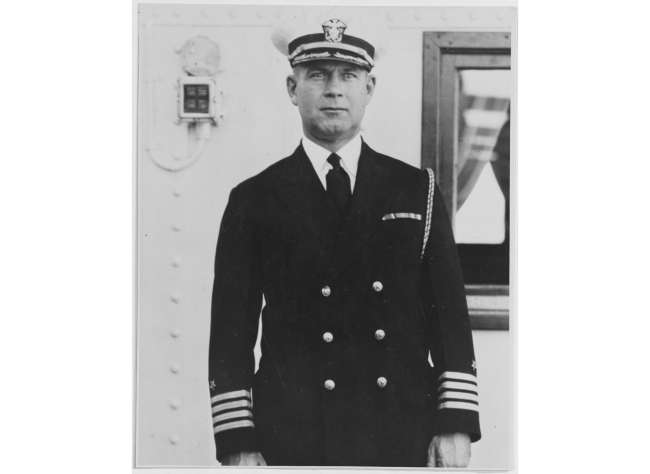The Ship
The USS Arizona (BB-39) was a Pennsylvania-class battleship built in the Brooklyn Navy Yard and launched June 19, 1915. She was commissioned October 17, 1916 and kept stateside for the duration of World War I. She spent the majority of her service life conducting training and going on diplomatic missions, including escorting President Woodrow Wilson to the Paris Peace Conference in December 1918.
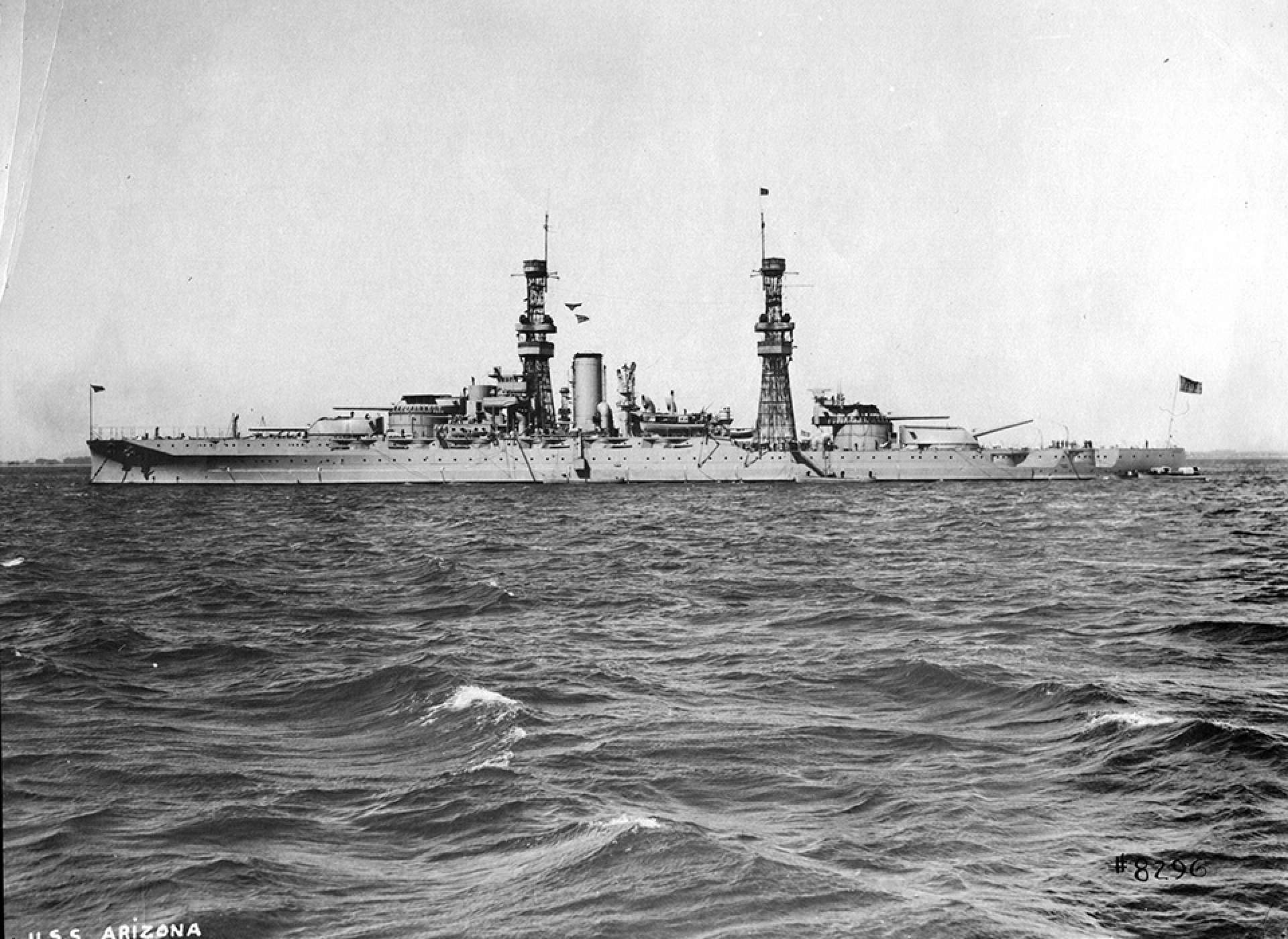
The USS Arizona in March 1922 with her lattice masts, prior to her 1929 modernization. Image courtesy of the National Archives, 19-LC-19-A-18.
She was modernized several times, most notably from May 1929 until March 1931 when her original lattice masts were replaced with tripod masts. The numerous weapon and technological improvements extended her usefulness as her original configuration had become obsolete after more than a decade of service.
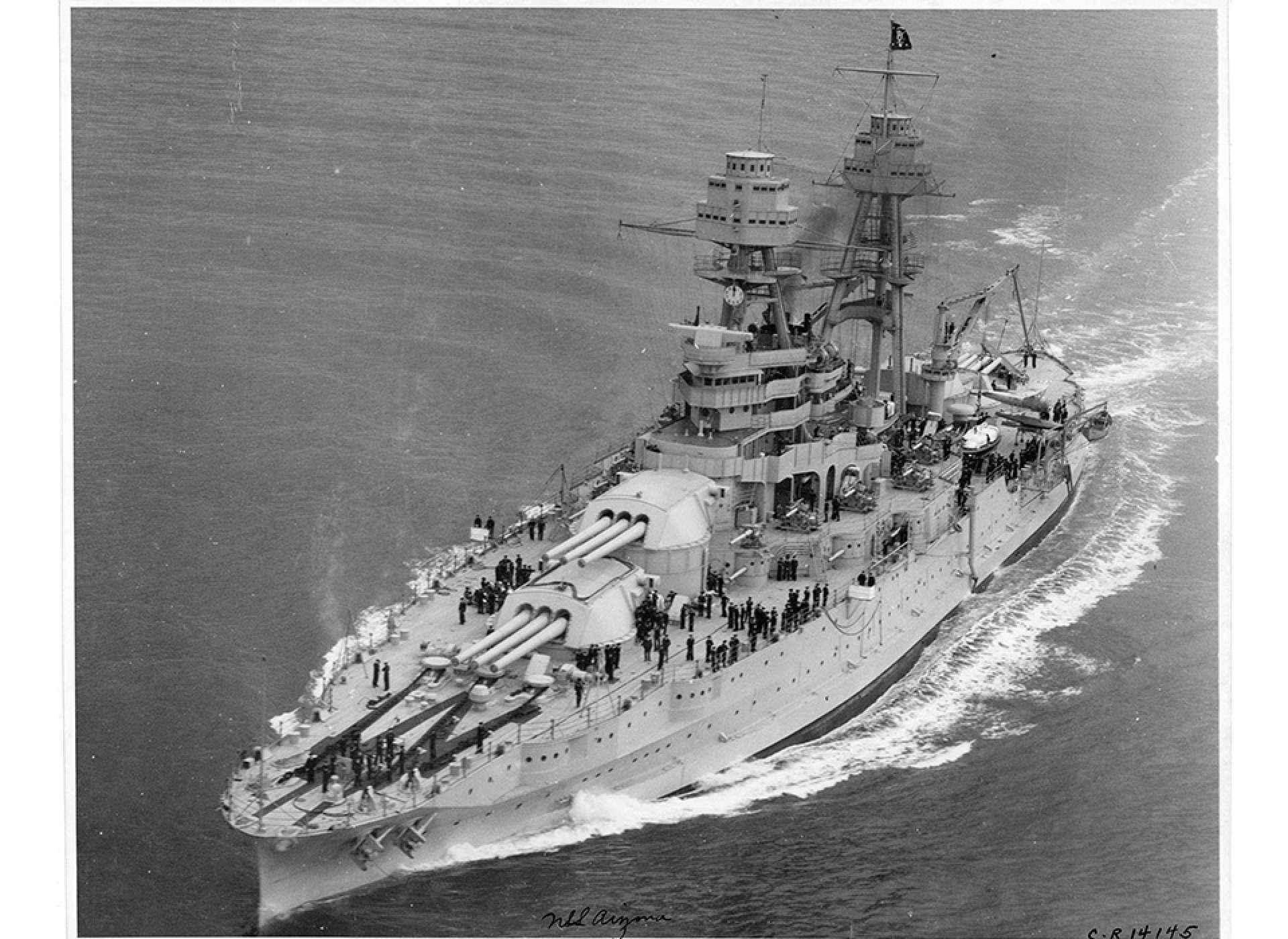
The USS Arizona in March 1931 with President Herbert Hoover aboard. Note the post-modernization tripod fore and mainmasts. Image courtesy of the National Archives, 19-N-2-6-14145.
After the modernization was completed, she had a crew complement of 1,731 sailors and Marines—including 92 officers and 1,639 enlisted personnel. By the winter of 1941, she was the flagship of Battleship Division 1 and was home ported in Pearl Harbor, Hawaii under the command of Captain Franklin Van Valkenburgh with Rear Admiral Isaac C. Kidd and his flag staff aboard.
Shapely’s Champions
In December 1941, the USS Arizona’s 87-man Marine Detachment had been under the command of 38 year old Captain Alan Shapely for a year. A 1927 graduate of the US Naval Academy, Shapley was a standout athlete who encouraged competition and team sports. Under his command, the Arizona’s Marine Detachment fielded successful athletic teams in swimming, baseball, boxing, basketball, golf, bowling, and whaleboat racing. He was due for promotion and his time with this detachment was coming to an end.
Private Russell McCurdy described Shapely as “a superb leader that took a genuine interest in the men of the detachment. He knew our records and our personalities and treated us with respect. Unlike the stereotypical Marine in command, Shapely was not the gruff type. He was soft-spoken and economical in his use of words, but he got the message across.”
In total, the detachment numbered five officers, 18 non-commissioned officers, and 64 enlisted Marines. They fulfilled a variety of responsibilities during routine operations, including serving as orderlies for the ship’s officers, sentries at the brig and gangway, and watch standers at various locations.
One of the Marines serving under Shapely was Private First Class Russell Durio, who was born March 21, 1921 in Arnaudville, Louisiana. His parents were Simon Durio, police chief of Sunset, Louisiana, and Alcidie Marie Durio. He was the cousin of my grandfather, Joseph Ray Clay, Sr. Like a couple of typical Cajun boys, they would go out drinking and running wild until they both joined the military. Russell enlisted in the US Marine Corps while my grandfather ended up in the US Army Air Corps.
Duty Calls
At general quarters, or battle stations, the primary responsibility of the Arizona’s Marines was the operation and direction of fire of the ship’s secondary batteries. Shapely stated in a June 1941 report that “during the period 1 July, to 31 December, 1940, the Marine Detachment manned six 5-inch 51-caliber guns.” These were used to fire broadside attacks against enemy targets and even defensively against incoming torpedoes.
Each of the five-inch guns were inside casemates, enclosed gun rooms, on the Upper Deck of the Arizona just aft of Turret II. While the wide casemate openings allowed the guns to train side to side in a wide arc, they could only elevate a maximum of 20 degrees, rendering them useless for anti-aircraft purposes. The Marine Detachment quarters were located directly adjacent to these casemates to ensure that most of the gun crews would only be a few steps away from their battle stations in the event of an emergency.
Each gun would be overseen by a gun captain, either a Marine noncommissioned officer or a US Navy petty officer, with 11 men serving as projectile and powder handlers and gun trainers. Each projectile weighed 50 lbs and was loaded with a single 25 lb powder charge to propel it—both were inserted into the breech by hand. The guns had a maximum range of eight miles and a well-trained gun crew could fire eight to nine rounds per minute.
Arizona’s Marine gunners would conduct drills frequently, sometimes for hours on end, as there was intense pride in having the most efficient gun crews. When not doing live fire drills, they would use a working model of a gun’s breech block to practice the timing of the loading process. Internal competition was promoted to encourage performance and loaders who weren’t up to snuff were given less demanding positions.
While one set of Marines would be busy at work inside their casemates, another group, led by Captain Shapely, would be directing the secondary battery fire from a position called “secondary aft.” This fire control center was located high up in the ship’s mainmast, in the maintop, and accessible via exterior ladders on the structure’s tripod legs. The equipment in secondary aft electronically transmitted the target’s position to each casemate and it was up to the gun’s crew to sight the gun based on the information provided.
The casemates and secondary aft were where almost all of the Arizona’s Marines would be during the Pearl Harbor attack. Their individual fates would be determined by the proximity of their location to the catastrophic explosion that destroyed their ship.
Shapely had been relieved of command of the Arizona’s Marine Detachment by Captain Jack Earle on December 6, 1941. The official handover of responsibilities couldn’t be completed before the end of the day, so the two went out for drinks that night. Afterwards, Earle retired to the apartment he shared with his wife in Waikiki while Shapely returned to the ship. Earle recalled, “Because Alan Shapely wanted a beer, I’m alive today.”
The Attack
The attack on Pearl Harbor commenced at 7:55 a.m. on Sunday, December 7, 1941. It was a quiet morning with absolutely no forewarning of an imminent attack and all of Hawaii’s military installations were quietly at ease. Just as the crews of each ship in the harbor were raising morning colors on their fantails, the formations of Japanese planes struck. The surprise was complete. The results were devastating.
The Arizona’s bewildered crew realized that this was not a drill shortly after the attack commenced and the ship was roused to general quarters. Dutifully, each sailor and Marine aboard rushed to their battle stations. The casemates quickly filled with their Marine crews while the secondary aft personnel braved machine gun fire and a hail of shrapnel on the exposed ladders. Second Lieutenant Carleton Elliot “Sim” Simensen was struck in the chest and abdomen by shrapnel as he led a group up those ladders. He encouraged his fellow Marines to continue on, and quickly succumbed to his wounds as he lay on the searchlight platform of the mainmast.
In total, USS Arizona was hit by four 800 kg armor piercing bombs dropped from high-level bombers. The killing blow struck the ship at approximately 8:10 a.m., when one of the armor piercing bombs hit just starboard of Turret II, penetrated deep into the ship, and detonated her forward magazines. The explosion devastated the forward areas of the ship and set thousands of gallons of leaking fuel ablaze.
The five inch casemates and adjacent Marine Detachment living quarters were directly exposed to the violent blast and immediate searing flames. Those Marines not killed instantly were burned beyond recognition and didn’t survive long after. Some of the surviving Marines recalled only being able to recognize their shipmates by the sound of their voice, because all their hair, skin, and clothing had been completely burned off.
-

The wreck of the USS Arizona, looking forward from the starboard quarter. Turrets III and IIII are on the left. The mainmast is at center, with the searchlight platform and secondary aft position at the top of the photo. Image courtesy of the National Archives, 80-G-32609.
-

The burned and collapsed foremast and superstructure of the USS Arizona. A five inch gun can be seen pointing straight out of its casemate at center just above the water. Image courtesy of the National Archives, 80-G-32608.
One of these unfortunate souls was First Sergeant John Duveene, who had a penchant for calling his Marines “champions.” Private Russell McCurdy encountered his severely burned First Sergeant on the ship’s quarterdeck, where he yelled for them to “Swim for it, champions.” Duveene would not survive his grievous wounds.
For the Marines in secondary aft, fortune was more in their favor. The concussion from the explosion that broke Arizona in two rattled them around their enclosed position like dice. Fortunately for them, the foremast and forward superstructure in front of them absorbed a significant amount of the blast. Prevailing trade winds coming from the ship’s port quarter kept much of the smoke directed away from them, allowing for a brief opportunity to escape back to the main deck before the spreading fire below consumed their escape path.
After the order to abandon ship was announced, the survivors all dove into the oil slicked waters of the harbor. Injuries and burning oil made the short swim to Ford Island daunting, but the few who made it into the water managed to get to safety. Shapely, who managed to escape with the secondary aft crew, helped bring Corporal Earl Nightingale ashore, despite his own injuries. Shapely was awarded the Silver Star for his bravery.
The Price Paid
The sudden and catastrophic destruction of the USS Arizona nearly wiped out the ship’s Marine Detachment—only 15 of the 88 Marines stationed aboard at the time of the attack survived.
Of the 73 who perished, 21 would be identified and buried while 52 remain entombed inside the wreck of the Arizona. This single group’s casualties accounted for 67 percent of the 109 US Marines lost during the attack. Among those unrecovered Marines is PFC Durio. Little is known about Russell’s actions that fateful morning in Pearl Harbor, but he probably met his end in one of the casemates—serving bravely alongside his shipmates and now resting in good company.
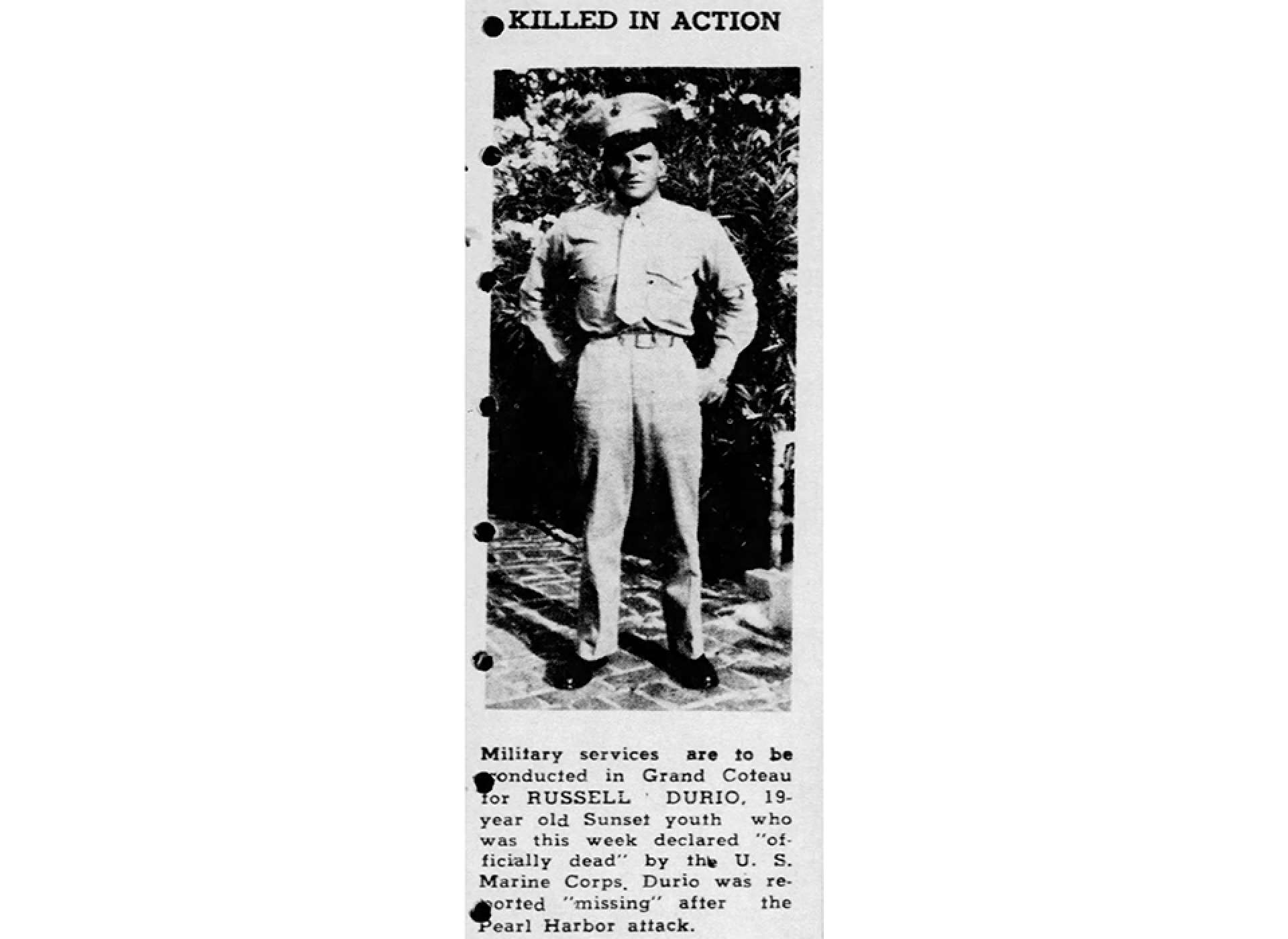
News article about PFC Russell Durio’s memorial services. Image courtesy of Find a Grave, added by Geoffrey Roecker.
The names of these fallen Marines are memorialized in two locations in Pearl Harbor. The first is inside the Shrine Room located within the USS Arizona Memorial, where the names of all 1,177 of her fallen crew are carved into white marble. The Marine Detachment list is located on the lower right side of the wall. The second is the Marine Detachment Memorial, which was dedicated November 14, 2005. It is located on the grounds of the Pearl Harbor National Memorial and consists of a flagpole with seven bronze plaques on its base listing names of Arizona’s lost Marines.
-

The Shrine Room of the USS Arizona Memorial, which lists the 1,177 names of the sailors and Marines lost during the December 7, 1941 attack. The Marine Detachment section is at the bottom right. Image courtesy of the Department of Defense, 042955-D-SZV97-456.
-

An aerial view of a boat unloading visitors to the USS Arizona Memorial. Image courtesy of the National Archives, 330-CFD-DN-SD-06-09336.
Meet the Author
Frank Clay is the Curator of Battleship Missouri Memorial in Pearl Harbor, Hawai'i. He previously served as the ship’s Director of Visitor Operations, overseeing the Tours Department and guest experience for nearly a decade. He was raised in Ewa Beach on the island of O'ahu and received his degree in Journalism at the University of Hawai'i at Mānoa.
Recommended Reading
Bernard, Shane K. The Cajuns: Americanization of a People. Jackson: University Press of Mississippi, 2003.
Camp, Dick. Battleship Arizona’s Marines At War: Making the Ultimate Sacrifice, December 7, 1941. St. Paul: Zenith Press, 2006
Madsen, Daniel. Resurrection: Salvaging the Battle Fleet at Pearl Harbor. Annapolis: Naval Institute Press, 2003.
Slackman, Michael. Target: Pearl Harbor. Honolulu: University of Hawaii Press, 1990.
Stillwell, Paul. Battleship Arizona: An Illustrated History. Annapolis: Naval Institute Press, 1991.
missingmarines.com/russell-durio
Cite this article:
MLA Citation:
APA Citation:
Chicago Style Citation:
